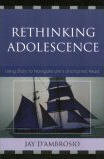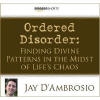Rethinking Myth and the Heart II
 There was no real siege of a city. No army laying waste to the countryside or laying down barbed wire. Rather, this song was describing the devastation of a heart that had been crushed and wounded by another and the mission to recover something precious that had been lost. Instead of simply saying that this man recognized that he had hurt someone he cared deeply about and now understood that he needed to make amends, Sting portrayed the entire scenario in a mythical setting, a setting that helps to understand this event in a deeper and more meaningful manner.
There was no real siege of a city. No army laying waste to the countryside or laying down barbed wire. Rather, this song was describing the devastation of a heart that had been crushed and wounded by another and the mission to recover something precious that had been lost. Instead of simply saying that this man recognized that he had hurt someone he cared deeply about and now understood that he needed to make amends, Sting portrayed the entire scenario in a mythical setting, a setting that helps to understand this event in a deeper and more meaningful manner.Myths and stories help us to place the events of our lives in the proper perspective. Many of them have survived the vast millennia of human existence because they speak to us about the things that are true in life, the things that really matter, and the things that all people, regardless of time or culture, experience.
The great stories that have moved us in a multitude of ways do so because they speak to us at the level of the heart. This current generation has a wealth of “head knowledge.” They know that light travels at 186,000 miles per second, and they can search the Internet to discover that Tahiti is the largest island in the Society Islands chain. “Heart knowledge,” however, is conspicuously absent in today’s youth, and it is sadly reflective of our society as a whole.
The great teachers throughout history have relied on stories to communicate something deeper, something that is impossible to communicate using mere facts and figures. Plato taught his students about encountering the unexplainable through a story that we refer to as Plato’s Cave. He told the tale of a group of people who had been born into captivity, living the whole of their lives in a dark cave where the only source of light was a fire pit. Shadows danced on the walls of this cave, with the occupants having no awareness of the passing of day or night. All was the
 same. One day, one of the men who had spent his entire life in this cave escaped his subterranean confines and ventured outside to see the world. When he saw the brilliance of the sun in the blue sky, he fell to his knees in awe and reverence. Upon his return to the darkness of the cave, he tried to explain the wonderful sight he had witnessed on the surface. The man quickly became frustrated because no one was able to comprehend the beauty and power of the sun. The only thing they were able to understand was that the sun was like the fire pit.
same. One day, one of the men who had spent his entire life in this cave escaped his subterranean confines and ventured outside to see the world. When he saw the brilliance of the sun in the blue sky, he fell to his knees in awe and reverence. Upon his return to the darkness of the cave, he tried to explain the wonderful sight he had witnessed on the surface. The man quickly became frustrated because no one was able to comprehend the beauty and power of the sun. The only thing they were able to understand was that the sun was like the fire pit. Plato’s students were aghast at the pitiful comparison of the glory of the sun to a mere fire pit. This story explains the challenge of such a mission with much greater authenticity than by simply saying that it is hard to explain something to someone who has not experienced it.
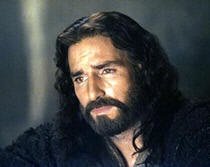 Jesus taught his disciples through the use of parables, stories intended to convey a deeper truth about life. The parable of the Seeds and the Sower is, at least on the surface, a story about a farmer who scatters seeds across his land, with the seeds landing on various types of soil. Some seeds fall upon hardened, sun-baked soil, never getting a chance to germinate. Others land on fertile soil and take root; however, weeds eventually crowded out the young plants. But some of the seeds land on good soil, taking root and turning into full-grown plants. Jesus masterfully uses this story as a metaphor for the condition of a person’s heart, their inner life.
Jesus taught his disciples through the use of parables, stories intended to convey a deeper truth about life. The parable of the Seeds and the Sower is, at least on the surface, a story about a farmer who scatters seeds across his land, with the seeds landing on various types of soil. Some seeds fall upon hardened, sun-baked soil, never getting a chance to germinate. Others land on fertile soil and take root; however, weeds eventually crowded out the young plants. But some of the seeds land on good soil, taking root and turning into full-grown plants. Jesus masterfully uses this story as a metaphor for the condition of a person’s heart, their inner life.Stories speak to us in a way nothing else can. If we want to offer real hope and help to the young people in our spheres of influence, we must open our eyes and our hearts to the myths, fables, and stories of our youth—the stories that really mattered, that inspired us to be something greater. We will need them!
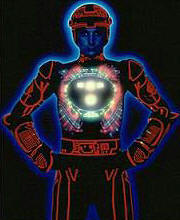 This generation of students has been given more privileges and opportunities than all previous generations combined. We have incorporated technology into the classroom and the home as never before, in an attempt to deliver educational material in a manner that is exciting and informative. In fact, my first book, E-Teaching: Creating Web Sites and Student Web Portfolios Using Microsoft PowerPoint, touted the educational benefits of using technology in the learning process. Technology is an invaluable asset when it comes to educating our youth—but we must realize that students need more than technology can offer.
This generation of students has been given more privileges and opportunities than all previous generations combined. We have incorporated technology into the classroom and the home as never before, in an attempt to deliver educational material in a manner that is exciting and informative. In fact, my first book, E-Teaching: Creating Web Sites and Student Web Portfolios Using Microsoft PowerPoint, touted the educational benefits of using technology in the learning process. Technology is an invaluable asset when it comes to educating our youth—but we must realize that students need more than technology can offer.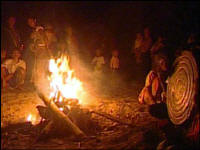 There does not need to be a national movement, nor a change in school policy; rather the current situation calls for a change in the policy of individual hearts toward young people. As George Bernard Shaw said, “Some men see things as they are and ask why. Others dream things that never were and ask why not.” We need to finally admit that there is more to a student than simply their grades, friends, sports, and family. There is a heart, a spiritual core to every young person. We must “go there.” The world has changed quite a bit over the past few years. We are starting to view our young people in a new light. Realizing that the tests and challenges they face throughout the adolescent years are more than just things they will “get over,” many have come to the conclusion that all who really care about today’s youth need to view these challenges through a different lens. The lens that we need is myth and story.
There does not need to be a national movement, nor a change in school policy; rather the current situation calls for a change in the policy of individual hearts toward young people. As George Bernard Shaw said, “Some men see things as they are and ask why. Others dream things that never were and ask why not.” We need to finally admit that there is more to a student than simply their grades, friends, sports, and family. There is a heart, a spiritual core to every young person. We must “go there.” The world has changed quite a bit over the past few years. We are starting to view our young people in a new light. Realizing that the tests and challenges they face throughout the adolescent years are more than just things they will “get over,” many have come to the conclusion that all who really care about today’s youth need to view these challenges through a different lens. The lens that we need is myth and story.
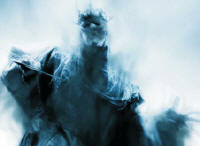 One night, after we had put our son to bed, my wife and I watched the movie The Lord of the Rings: The Fellowship of the Ring (2001). I have always been a strong admirer of J. R. R. Tolkien, due to the universal messages of truth that can be found throughout his works, and as I watched the scene in the movie where the Lord of the Nazgul stabbed the young hobbit Frodo, I began to feel as if I needed to pay close attention. In the scene, Sam, Merry, Pippin, and Aragorn watch helplessly as Frodo slips further and further into unconsciousness and toward death.
One night, after we had put our son to bed, my wife and I watched the movie The Lord of the Rings: The Fellowship of the Ring (2001). I have always been a strong admirer of J. R. R. Tolkien, due to the universal messages of truth that can be found throughout his works, and as I watched the scene in the movie where the Lord of the Nazgul stabbed the young hobbit Frodo, I began to feel as if I needed to pay close attention. In the scene, Sam, Merry, Pippin, and Aragorn watch helplessly as Frodo slips further and further into unconsciousness and toward death.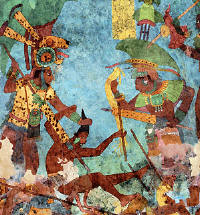 some of the trials that befell us during those school years would be things that we wish we could forget. Let’s face it, growing up is hard! We have all seen our share of heartache, harassment, the loss friendship, isolation, divorce, death, humiliation, and pressure—if not in our own story, then at least in the stories of our friends and loved ones. Some try to shrug it off, saying that this is all just a part of adolescence, and that the kids will “get over it.” But many of you have witnessed these ordeals firsthand . . . and many have never gotten over it. The wounds they have endured in those years of life have stayed with them, like a cancer on the soul. One man I was mentoring finally confessed to me after several months that the tormenting he endured in eighth grade at the hands of a few bullies has played a huge part in his current struggle with anger issues.
some of the trials that befell us during those school years would be things that we wish we could forget. Let’s face it, growing up is hard! We have all seen our share of heartache, harassment, the loss friendship, isolation, divorce, death, humiliation, and pressure—if not in our own story, then at least in the stories of our friends and loved ones. Some try to shrug it off, saying that this is all just a part of adolescence, and that the kids will “get over it.” But many of you have witnessed these ordeals firsthand . . . and many have never gotten over it. The wounds they have endured in those years of life have stayed with them, like a cancer on the soul. One man I was mentoring finally confessed to me after several months that the tormenting he endured in eighth grade at the hands of a few bullies has played a huge part in his current struggle with anger issues.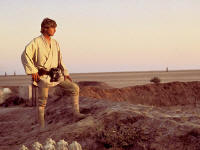 Some choose the safety of the sheltered harbors of life and never seek the adventure that beckons. They balk in the face of such risk. It is an odyssey of great magnitude and importance, but I fear that many of us do not grasp its significance. This call to voyage begins the instant we are brought into this world and does not end until the moment we take our last breath. If we seek out the journey set before us, we will find the life and freedom for which we earnestly wish. If we do not, we will find only the safety, comfort, and boredom of an unlived life.
Some choose the safety of the sheltered harbors of life and never seek the adventure that beckons. They balk in the face of such risk. It is an odyssey of great magnitude and importance, but I fear that many of us do not grasp its significance. This call to voyage begins the instant we are brought into this world and does not end until the moment we take our last breath. If we seek out the journey set before us, we will find the life and freedom for which we earnestly wish. If we do not, we will find only the safety, comfort, and boredom of an unlived life. Myths and stories can help people place their own personal narrative and those of others into the proper context. All myths and stories have a villain. Adolescents, too, face an enemy in their lives—albeit one that is more subtle and less obvious, but no less insidious. Further, these great tales tell of a journey upon which a hero must embark. Likewise, young people are on a journey of the heart and soul. Myth and story reveal the heroine to be something greater and more resplendent than first believed.
Myths and stories can help people place their own personal narrative and those of others into the proper context. All myths and stories have a villain. Adolescents, too, face an enemy in their lives—albeit one that is more subtle and less obvious, but no less insidious. Further, these great tales tell of a journey upon which a hero must embark. Likewise, young people are on a journey of the heart and soul. Myth and story reveal the heroine to be something greater and more resplendent than first believed.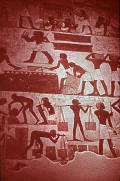 Something is missing. You sense it when you leave for work in the morning or return home after a long day. You catch the scent of it when you gaze upon a sunset over the ocean or stare into the starry night sky. From deep within, we wonder if there is more to life than the relentless machinations of our days. So many adults bury this feeling with busyness and distraction. To acknowledge it would render the things we’ve learned to cling to for significance and security meaningless. So we shove our hearts and that sense of emptiness down into a corner of ourselves that rarely sees the light of day and continue on in the existence we have created for ourselves. We find our worth in the cars we drive, the house in which we survive, and the promotions for which we strive.
Something is missing. You sense it when you leave for work in the morning or return home after a long day. You catch the scent of it when you gaze upon a sunset over the ocean or stare into the starry night sky. From deep within, we wonder if there is more to life than the relentless machinations of our days. So many adults bury this feeling with busyness and distraction. To acknowledge it would render the things we’ve learned to cling to for significance and security meaningless. So we shove our hearts and that sense of emptiness down into a corner of ourselves that rarely sees the light of day and continue on in the existence we have created for ourselves. We find our worth in the cars we drive, the house in which we survive, and the promotions for which we strive. What’s in a word? What does it matter if we stop saying the words “Merry Christmas?” Does it make a difference if we replace them with the more comfortable “Happy Holidays?” Our society has cautiously opted to alter its word usage so as not to offend anyone. When you break it all down, they are just words...right? Well, hold on a minute.
What’s in a word? What does it matter if we stop saying the words “Merry Christmas?” Does it make a difference if we replace them with the more comfortable “Happy Holidays?” Our society has cautiously opted to alter its word usage so as not to offend anyone. When you break it all down, they are just words...right? Well, hold on a minute.

